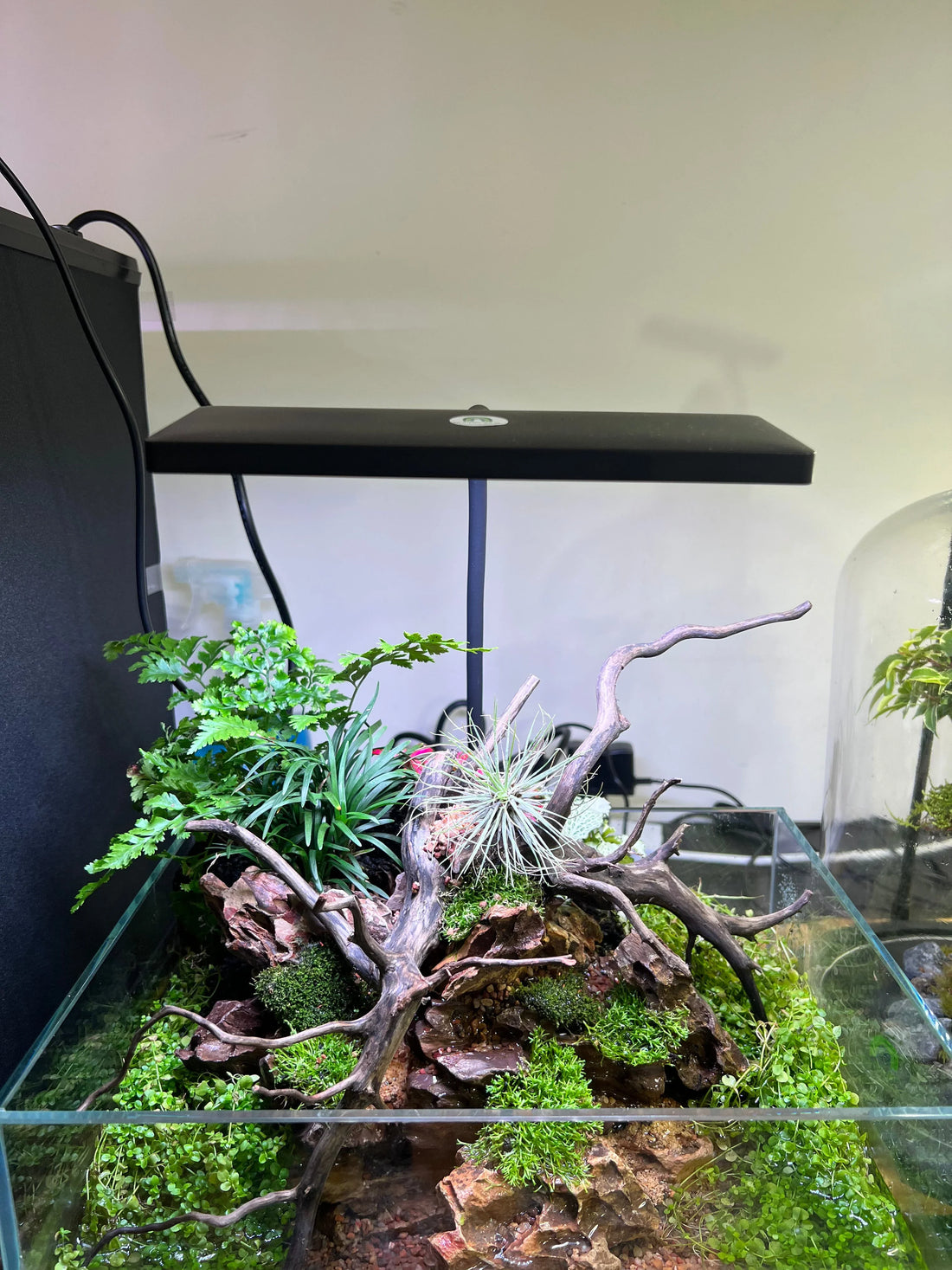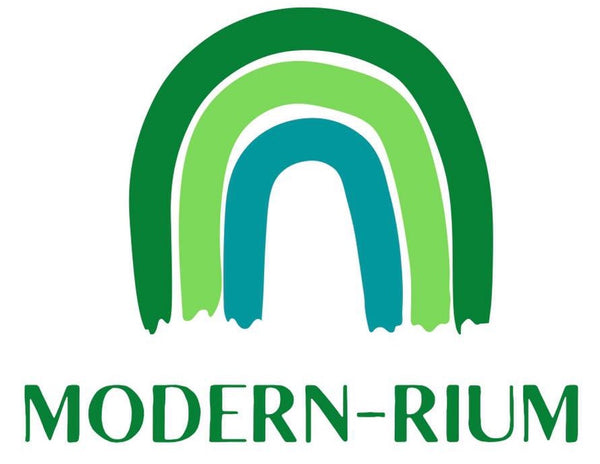
Lighting in Paludariums: How to Keep Plants and Animals Happy
Danny PhamShare
When setting up a paludarium, many enthusiasts focus on the design, the plants, or the water feature, yet one essential element often overlooked is lighting. Lighting does far more than just illuminate your setup — it directly affects plant growth, animal wellbeing, and the overall stability of your miniature ecosystem. The right lighting not only brings out the natural beauty of your paludarium but also supports the biological processes that keep it thriving.
🌿 Why Lighting Matters
Light is the foundation of all life inside a paludarium. For plants, it drives photosynthesis, helping them produce the energy they need to grow strong and vibrant. For animals, it regulates their natural rhythms, appetite, and even breeding behaviour. A well-balanced lighting setup maintains the temperature and prevents unwanted algae growth. When the intensity, spectrum, and duration are properly balanced, the entire ecosystem flourishes in harmony.
💡 Types of Paludarium Lighting
Among the many lighting options available, LED lights stand out as the most versatile and efficient choice. They provide bright, natural illumination without producing excessive heat, which makes them safe for both plants and animals. Full-spectrum LED systems, typically ranging between 5000 and 6500 Kelvin, mimic daylight and promote healthy plant growth. Many models are adjustable, allowing you to fine-tune brightness and colour tone while conserving energy. Moisture resistance is also an important feature, as high humidity is a defining trait of most paludariums.
Fluorescent lighting remains another solid option, especially for larger or taller tanks. T5 or T8 fluorescent tubes are known for providing even coverage and strong output while being budget-friendly. Although fluorescent bulbs gradually lose intensity over time, replacing them every eight to twelve months ensures steady light quality for your plants and aquatic zones.
For paludariums housing reptiles, turtles, or amphibians, UVB lighting is essential. These rays help animals synthesise vitamin D3, which is vital for bone health and proper metabolism. UVB bulbs should be positioned over basking areas or partially above the land section of your tank. Their effective range is typically between 30 and 45 centimetres, and they should be replaced every six to nine months to maintain effectiveness.
Halogen and spotlight lamps are also useful for creating basking zones. They mimic natural sunlight intensity, allowing reptiles and amphibians to thermoregulate effectively. These lights also add depth and visual warmth to your display, making your paludarium appear more dynamic and lifelike. However, because they produce heat, it’s important to monitor temperature and use a thermostat or dimmer when needed.
🌈 Understanding Light Spectrum
The colour spectrum of light plays a critical role in both plant development and animal behaviour. Blue light, found in the 450–495 nanometre range, encourages compact, leafy growth, while red light between 620 and 750 nanometres stimulates stem elongation and flowering. A combination of these wavelengths, known as full-spectrum lighting, most closely resembles natural daylight and is the ideal choice for supporting both aquatic and terrestrial species. With a full-spectrum setup, your plants will display richer colours, and your animals will remain active and healthy.
⏰ Light Duration and Routine
In most paludariums, maintaining a consistent light cycle of ten to twelve hours per day works best. This schedule mimics tropical daylight patterns and supports both photosynthesis and animal circadian rhythms. Using an automatic timer ensures reliability and removes the need for daily manual adjustments. Lights should not remain on around the clock, as continuous exposure can lead to algae overgrowth and stress for both plants and animals. Incorporating sunrise and sunset effects through dimmable lights can further enhance the natural feel of your environment.
🧪 Common Lighting Mistakes
Several common mistakes can hinder the health of your paludarium. Excessively strong lighting often causes algae blooms and disturbs sensitive species, while weak or ageing bulbs result in poor plant growth. The absence of UVB lighting in setups with reptiles or amphibians can lead to serious health issues, including metabolic bone disease. Additionally, overheating can occur when lights generate too much heat in enclosed spaces. To prevent these issues, ensure you use appropriate light strength, replace bulbs regularly, and monitor your tank’s temperature and humidity.
🌞 Final Thoughts
Lighting is the heartbeat of a paludarium. It fuels the plants, energises the animals, and brings the entire ecosystem to life. The right balance of brightness, colour, and timing transforms your enclosure from a simple display into a vibrant, self-sustaining microhabitat. Whether your goal is lush greenery, happy frogs, or crystal-clear water, investing in proper lighting ensures that your paludarium not only looks beautiful but also thrives for years to come. When your lights mimic nature, everything inside your little world responds in harmony.
 is here! Shop now, pay later in 4 easy installments
is here! Shop now, pay later in 4 easy installments











